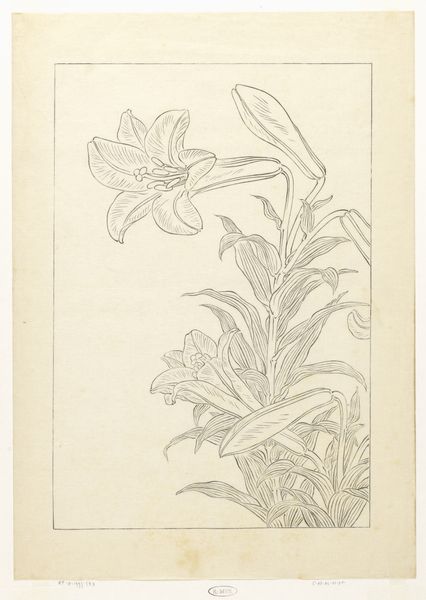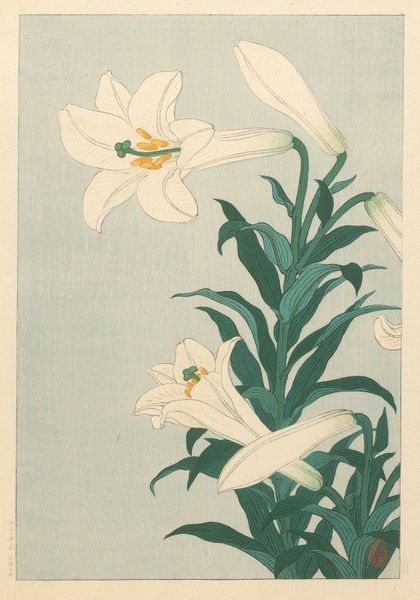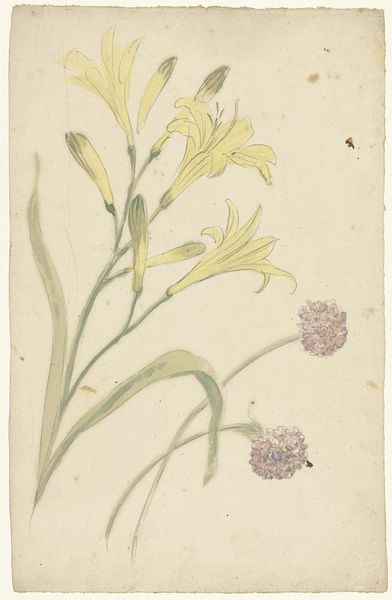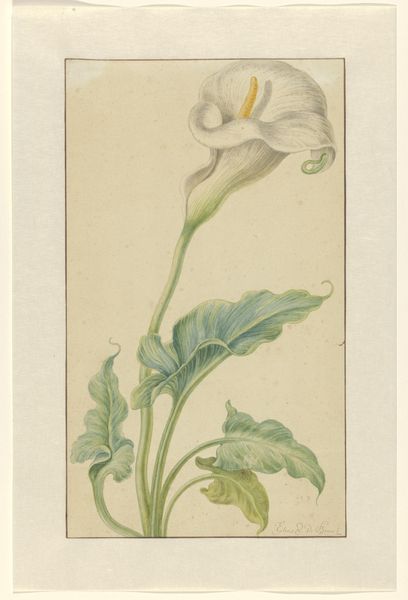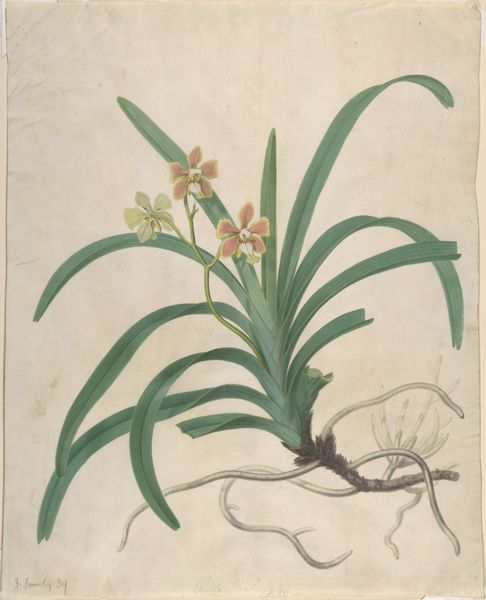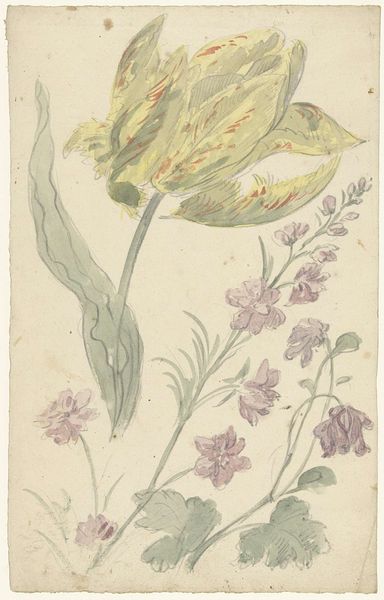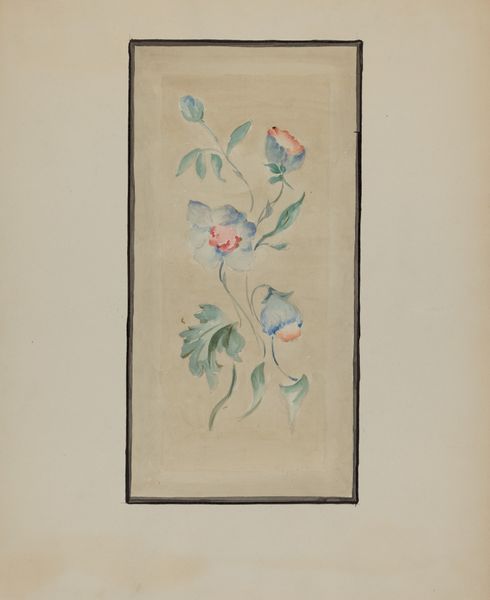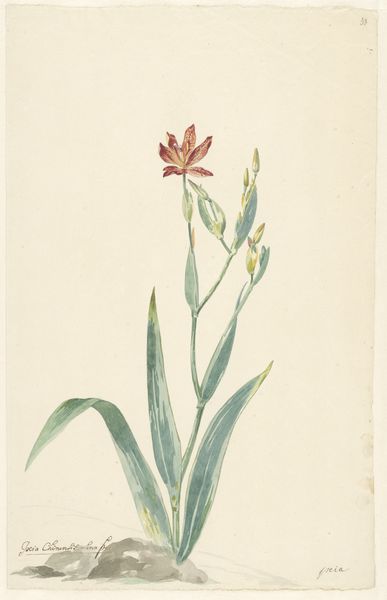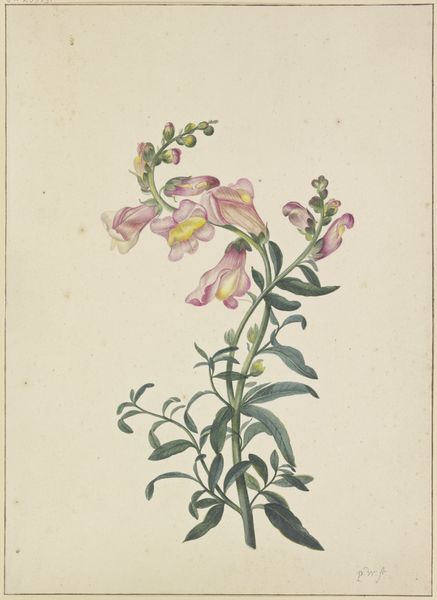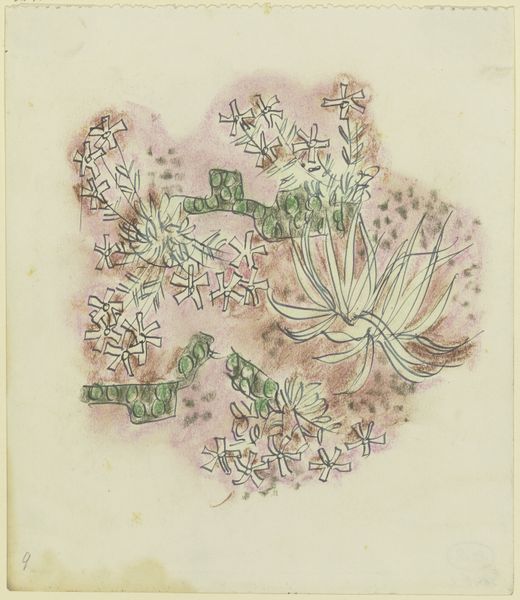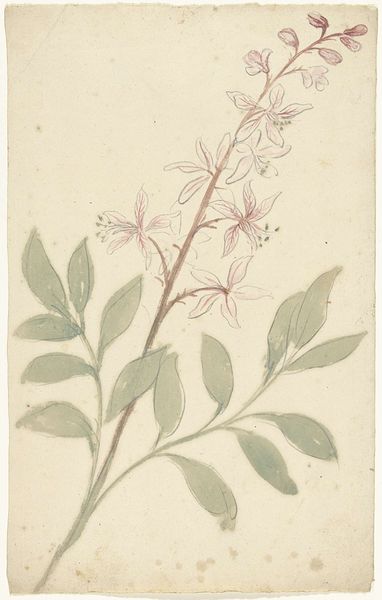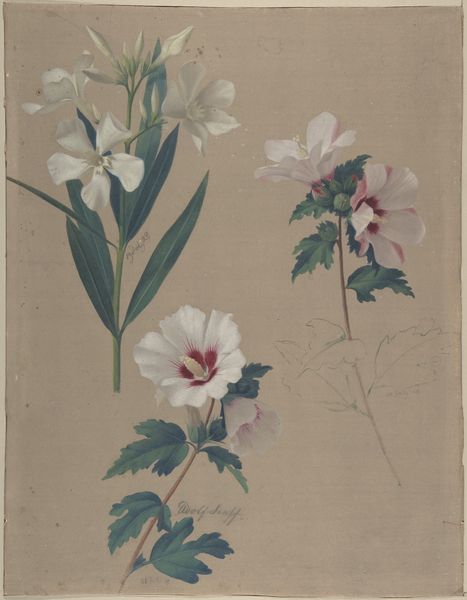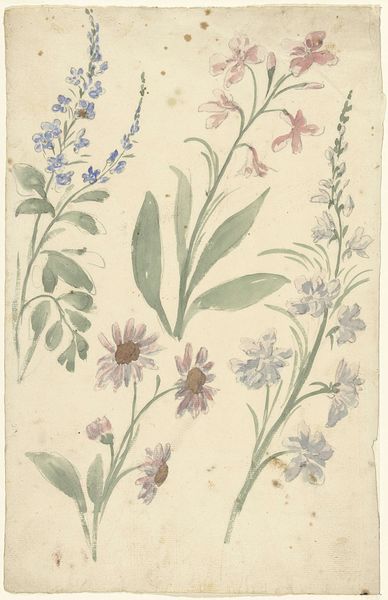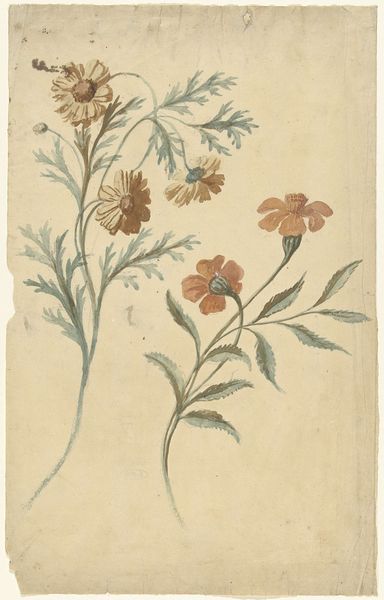
Dimensions: height 385 mm, width 262 mm
Copyright: Rijks Museum: Open Domain
Curator: Ohara Koson's "Lilies," created sometime between 1912 and 1930. It's a Japanese print, using ink and watercolor on paper. What's your first take on it? Editor: A sense of delicate, controlled growth strikes me. The lilies almost feel captured, observed rather than blooming freely. There is an imposed control within the visual field. Curator: Right. Ukiyo-e prints like this one were a product of a sophisticated commercial culture, catering to a specific consumer market. Koson adapted traditional techniques for a Western audience eager for "Japanesque" imagery. It is very much production based. Editor: It’s fascinating how lilies themselves carry so much symbolic baggage across cultures – purity, death, resurrection. The Japanese context layers on additional meanings, potentially linking to themes of transience and beauty, very traditionally ukiyo-e, like cherry blossoms. The flowers were specifically produced for consumers. Curator: Exactly. Consider the material reality: the paper, the inks, the labor involved in carving the woodblocks, if he did the printing himself. Each stage of the print’s making has to adhere to certain standards, there are external demands driving artistic production, always impacting its perceived purity. The final product for international exchange, this makes it very impactful within Ukiyo-e landscape and consumerism. Editor: I wonder if the very choice of lilies was dictated by the Western market's taste? They're not as iconically Japanese as, say, chrysanthemums or peonies, yet they are extremely well know universally. Their elegant simplicity could be precisely what made them appealing, a universally understood symbol presented with Japanese aesthetic sensibility. Curator: Perhaps. The export market demanded certain subjects rendered in particular ways. This raises interesting questions about authorship and agency; and especially concerning Ohara's intentions during that time. How much was he catering to expectations, and how much was personal expression? The labour and production based system asks the question, but his expression and cultural symbolistic influence cannot be ignored, but rather highlighted. Editor: It's a dance between tradition, commercial demand, and individual artistic interpretation. Recognizing those layers helps unpack the complexity of what at first seems like a simple, elegant floral study. The lilies tell their story! Curator: Indeed. Thinking about how the image exists as a commodity and also carries complex cultural meanings shifts our perception of the artwork. The consumption demands are highly met, along with its aesthetic representation of historical background. Editor: And viewing these lilies through the lens of both material production and symbolic weight definitely deepens one’s engagement with the print.
Comments
No comments
Be the first to comment and join the conversation on the ultimate creative platform.
